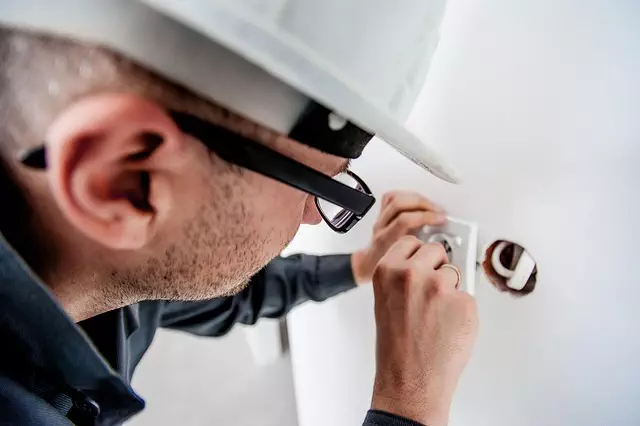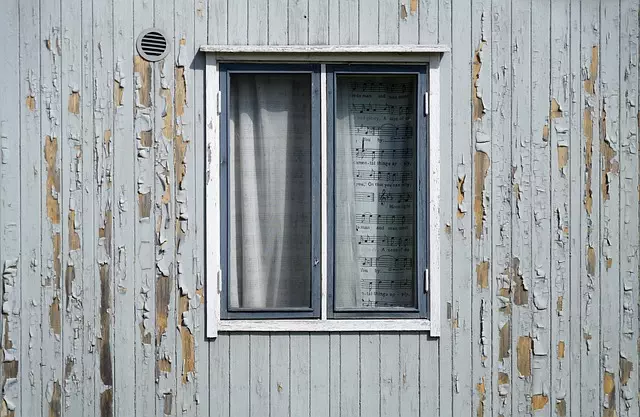Concrete cracks, caused by moisture fluctuations, pose structural risks. Identifying crack types (floor, stem wall, control joints) is key for effective repair. Homeowners should regularly inspect stem walls for early signs of damage. Prompt action involves using epoxy or polymeric compounds for minor cracks, and more extensive repairs require advanced techniques like carbon fiber reinforcement. Choosing the right materials, such as polymer-modified concrete, ensures long-lasting stem wall repair. A guide is provided on mixing and applying repair compounds, with regular maintenance including cleaning, sealing, and prompt crack repair to prevent future issues.
Concrete cracks can mar the aesthetics and structural integrity of buildings, especially stem walls. Understanding the causes and types of these cracks is crucial for effective repair. This article delves into the intricacies of concrete crack solutions, covering everything from identifying stem wall damage to choosing the right materials for long-lasting repairs. We also provide a step-by-step guide to stem wall repair and offer preventative maintenance tips to safeguard your concrete structures.
Understanding Concrete Cracks: Causes and Types

Concrete cracks can range from narrow hairline fractures to wide, open gaps, and they are a common issue that can affect structures of all ages. Understanding the causes and types of concrete cracks is essential for effective repair and prevention. One of the primary reasons behind these cracks is the shrinkage and expansion of concrete due to moisture fluctuations. This process can cause stress on the material, leading to surface and structural cracking.
There are various types of concrete cracks, each with its own characteristics. For instance, floor cracks often appear as diagonal or vertical lines and can result from settlement or unequal drying. Stem wall repair is a specific technique used to address vertical cracks in walls caused by differential movement, foundation issues, or poor construction practices. Other types include control joints, which are intentionally created to accommodate concrete shrinkage, and random cracks due to unpredictable environmental factors. Identifying the type of crack helps determine the most suitable repair method, ensuring long-lasting solutions.
Evaluating Stem Wall Damage: Signs and Inspection

Evaluating stem wall damage is a crucial step in addressing concrete crack issues, especially for structures with a foundation made from this robust material. The first sign of trouble often manifests as cracks or fissures, which can vary in width and depth. Homeowners and property managers should be vigilant about these early indicators. Cracks might appear on the surface or extend further down, signaling potential structural instability if left unattended. Regular visual inspections are key to identifying such issues early.
During an inspection, pay close attention to corners, edges, and any areas where the stem wall meets other structural elements. You’ll want to assess their integrity, noting any signs of shifting, uneven surfaces, or gaps that could indicate compromise. Tools like flashlights and levels can aid in this process, revealing hidden cracks or misalignments not visible from the outside. Prompt identification through thorough inspections is vital for effective stem wall repair and preventing further damage.
Repair Methods: From Temporary Fixes to Permanent Solutions

When it comes to concrete cracks, addressing them promptly is essential to prevent further damage and maintain structural integrity. Repair methods range from temporary fixes to permanent solutions, each offering varying levels of effectiveness and longevity. For smaller, non-structural cracks, a simple stem wall repair might be sufficient. This involves injecting epoxy or polymeric compounds into the crack to fill it and prevent water penetration. It’s an effective, quick fix that can last several years, making it ideal for minor issues.
For more extensive cracks, especially those affecting load-bearing walls, permanent solutions are necessary. These include replacing the damaged concrete with new pours or employing advanced repair techniques like carbon fiber reinforcement or hydraulic cement patching. Carbon fiber wraps, for instance, offer exceptional strength and durability, enhancing the overall structural stability of the wall. Hydraulic cements, known for their rapid hardening and high compressive strength, are effective in repairing larger cracks, providing both a permanent fix and improved aesthetics.
Choosing the Right Materials for Long-Lasting Repairs

When addressing concrete cracks, particularly in stem wall repair, selecting the appropriate materials is paramount for long-lasting solutions. Traditional methods often involve using concrete mix, but modern advancements offer alternatives tailored to specific crack types and sizes. For wider or more structural issues, polymer-modified concretes can provide enhanced flexibility and strength, preventing further damage. These advanced mixes mimic the natural properties of concrete while incorporating rubber or plastic additives that improve its performance under stress.
Moreover, for intricate cracks or aesthetic considerations, fiber-reinforced concretes are gaining popularity. Steel fibers embedded within the concrete enhance tensile strength, making it more resistant to cracking. This option not only ensures structural integrity but also offers a durable finish, closely resembling the original concrete surface. Choosing the right material requires assessing crack severity and understanding local climate conditions to ensure repairs withstand environmental stresses, guaranteeing a robust and lasting stem wall repair.
Step-by-Step Guide: Stem Wall Repair Process

To address concrete cracks, specifically those affecting stem walls, follow this step-by-step guide for an effective stem wall repair. Start by assessing the damage, identifying the type and extent of cracks. Next, prepare the area by clearing away debris and ensuring proper drainage to prevent water accumulation. Mix a suitable epoxy or mortar based on the crack’s size and depth, following manufacturer instructions. Apply the mixture using a putty knife, filling the crack completely. For larger gaps, consider using a fiber-reinforced composite material for added strength. Allow the repair compound to cure fully according to the product guidelines. Once cured, inspect the repaired area, ensuring it matches the surrounding concrete in texture and color. If needed, perform light finishing touches for a seamless finish.
Preventative Measures: Maintenance Tips for Concrete Structures

Regular maintenance is key to preventing concrete cracks, especially in structural elements like stem walls. A robust preventative strategy involves a combination of proper cleaning, sealing, and occasional repairs. Begin by clearing away any debris or dirt on the surface using pressure washers, ensuring no moisture is trapped beneath. After cleaning, apply a high-quality sealer designed for concrete to create a protective barrier against moisture ingress, which is a primary cause of cracking.
For stem walls, regular inspection is vital. Inspect for any signs of stress cracks or bulges and address them promptly using specialized repair techniques like injection molding or carbon fiber wrapping. Implementing these measures not only prolongs the life of concrete structures but also prevents more extensive and costly repairs down the line.
